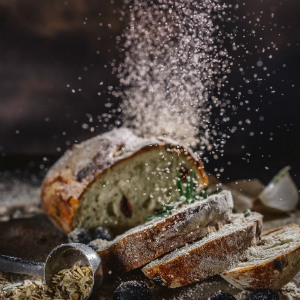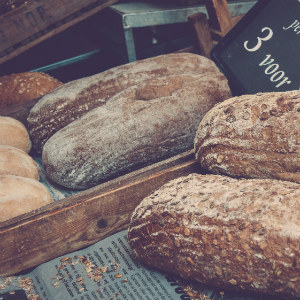
5 reasons to Carb Load everyday
How many of you avoid carbs like the plague? I’m guessing most of you. Carbs have been labelled as villains for anyone trying to lose or maintain weight loss in recent years.
It’s the latest in the fad food group elimination diets – once it was fat, briefly protein, and carbs have stayed taboo for many years. The fear of gluten has also fuelled this fad, and for some its good reason.
The truth of the matter is our bodies need carbohydrates for fuel; not just to keep us moving, but to keep our bodies functioning as they should.
Carbohydrates, by definition, include starches, sugars and fibre which are mostly found in grain products, fruits and vegetables. The body breaks down these starches and sugars into glucose, an important energy source that is needed by every cell in our bodies. Fibres add bulk, and act as food for the ‘good’ bacteria in our gut.
We need all three types of carbohydrates for a healthy, balanced diet. But the key is choosing complex carbohydrates over simple carbs.
 So let’s break this down in the most simple way – ‘complex’ is what nature naturally delivers us – grains, vegetables, fruits, legumes, nuts and seeds. Dietary fibre is a form of complex carbohydrate – it provides many health benefits including;
So let’s break this down in the most simple way – ‘complex’ is what nature naturally delivers us – grains, vegetables, fruits, legumes, nuts and seeds. Dietary fibre is a form of complex carbohydrate – it provides many health benefits including;
- Fibre gets all the digestive juices flowing: fibre takes longer to chew therefore stimulates the secretion of gastric juices which are required for healthy digestion
- Slows down bowel transit time and keeps you regular: fibre helps to modify the glucose response, absorb nutrients, bulk the stool and prevent constipation
- Weight control: the bulk of fibre provides a feeling of satiety which prevents over-eating
- Helps maintain the happy hormones: insoluble fibre provides a valuable food source for the good bacteria in our gut which are responsible for over 90% of our serotonin (that’s the feel good stuff!) production
- Protects the body against digestive disorders, colon cancer, cholesterol, gallstones and Type 2 Diabetes
‘Simple’ sugars are carbohydrates in their most basic form and usually result from human intervention, and they include refined sugar, honey, syrup, white bread and chocolates.
So the key is to eat food as close to what nature originally provided us!
Avoid processed foods – that’s anything in packets normally and you’re halfway there to better nutrition already and be mindful to read the ingredient labels on foods marketed as being ‘healthy alternatives’- anything ending with an ‘ose’ is sugar disguised! (ie. glucose, fructose, ribose etc.) For help reading nutritional labels check out my blog ‘Nutritional panels demystified’.
In 2015, Nutrition Australia updated the controversial food pyramid for the first time in 15 years. It’s a broad-based recommendation for adults 19-50 based on dietary guidelines set in 2013. Whilst ages are specified, they advise these guidelines should suit most people 1-70. But they should be used just as guideline – use it to determine your own optimum balance.
Perhaps the biggest change to the latest pyramid is the classification of carbohydrates.
You may recall the original pyramid had bread and grains on the bottom, with fruit and vegetables combined on the second most abundant. These have now been reversed, and the types of grains expanded to include more popular grains such as quinoa, couscous and oats. But the message remains the same – all are by definition, carbohydrates, and they should make up the bulk of your daily nutritional intake. Vegetables are fruit are classified as carbohydrates because they contain less protein and fat, and should make up the dominant part of our daily intake; approximately 50%.
Whilst I don’t agree with everything Nutrition Australia is advocating, the message that vegetable and legumes should make up the bulk of your daily intake is spot on.
From ancient times, grains have been a vital food source to humans. Today there are 8 major grains derived from seeds of grasses – wheat, barley, oats, sorghum, rye, rice, millet and corn. Within these groups there are varieties including farro, freekeh, emmer and spelt which are all types of wheat as well as new grains like triticale, a hybrid mixture of wheat and rye. Pseudo-cereals (not derived from the staple grains above) such as amaranth, buckwheat and quinoa are nutritionally similar and used in similar ways. They are not derived from grasses, but in fact from a variety of seeds from different plant species.
In case you’re wondering, these pseudo grains contain no gluten, hence their rise in popularity in recent years.
They are also much higher in protein, and therefore provide a greater level of satiety compared to the traditional grains. Quinoa is a ‘complete’ protein, meaning it contains all the essential amino acids in one food – and therefore an invaluable part of a vegetarian diet. Whilst corn and wheat have become highly commercialised and hybridised (crossing different strains to generate new characteristics), pseudo grains are much closer to their natural form and therefore better for us.
Pseudo grains are often called ‘ancient grains’ for this reason, and their popularity is on the rise!
Modern grains such as rice and wheat have been refined, processed in a mill to remove the bran and germ, leaving only the endosperm. Most of the original nutrients have been lost in the process so some manufacturers will add back some nutrients (known as fortification) but they are nowhere near as nutritious as their pseudo grain cousins. Because they are lower in fibre (being refined means less fibre) they are digested faster and your blood sugar spikes then falls, whereas the wholegrains are released far more slowly keeping you fuller for longer and maintaining a healthy blood sugar level (and a healthy weight!)
Note: Legumes are also a type of grain, however as their proportion of protein is greater than carbohydrate they are actually classified as protein.
Those of you that are sensitive to gluten, or diagnosed coeliac, must avoid grains of the Festicoideae family (belonging to the grass grains). These include wheat, barley, rye and spelt. Some people are also sensitive to oats although it does not technically contain gliadin, the part of gluten that causes problems.
I’m going to be really blunt about cereals, the commercial kind. They contain more ingredients that are harmful than beneficial for your overall health. In fact, I consider them junk food. Throw them out of your cupboard (don’t even finish the opened packs) and replace them with wholegrain choices.
We need to eat a variety of all of all grains as well as vegetables as the majority of our daily intake in order to get a good amount of soluble and insoluble fibre, both essential to good health.
So don’t avoid this very important food group! If you feel in need of some personal guidance please contact me or jump across to my online booking form to book an appointment.







Sorry, comments are closed for this post.